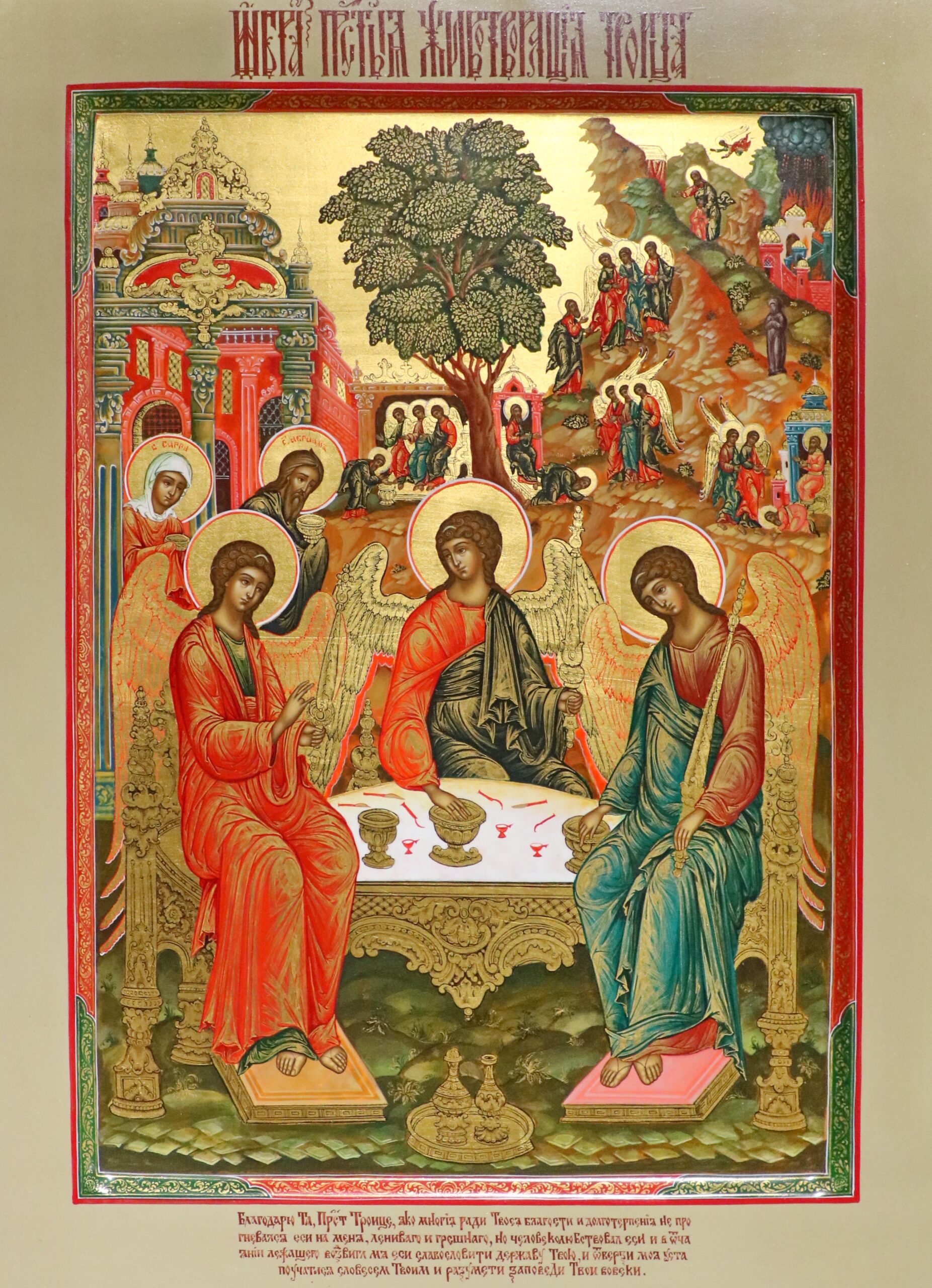Your cart is currently empty!
2 The Hospitality of Abraham

2 The Hospitality of Abraham
Genesis 18:1-15
“And the Lord appeared to him by the oaks of Mamre, as he sat at the door of his tent in the heat of the day. 2 He lifted up his eyes and looked, and behold, three men stood in front of him. When he saw them, he ran from the tent door to meet them, and bowed himself to the earth, 3 and said, “My lord, if I have found favor in your sight, do not pass by your servant. 4 Let a little water be brought, and wash your feet, and rest yourselves under the tree, 5 while I fetch a morsel of bread, that you may refresh yourselves, and after that you may pass on—since you have come to your servant.” So they said, “Do as you have said.” 6 And Abraham hastened into the tent to Sarah, and said, “Make ready quickly three measures[b] of fine meal, knead it, and make cakes.” 7 And Abraham ran to the herd, and took a calf, tender and good, and gave it to the servant, who hastened to prepare it. 8 Then he took curds, and milk, and the calf which he had prepared, and set it before them; and he stood by them under the tree while they ate.
9 They said to him, “Where is Sarah your wife?” And he said, “She is in the tent.” 10 The Lord said, “I will surely return to you in the spring, and Sarah your wife shall have a son.” And Sarah was listening at the tent door behind him. 11 Now Abraham and Sarah were old, advanced in age; it had ceased to be with Sarah after the manner of women. 12 So Sarah laughed to herself, saying, “After I have grown old, and my husband is old, shall I have pleasure?” 13 The Lord said to Abraham, “Why did Sarah laugh, and say, ‘Shall I indeed bear a child, now that I am old?’ 14 Is anything too hard[c] for the Lord? At the appointed time I will return to you, in the spring, and Sarah shall have a son.” 15 But Sarah denied, saying, “I did not laugh”; for she was afraid. He said, “No, but you did laugh.”
This Icon is usually referred to as the Hospitality of Abraham and depicts the visitation of the three angels to Abraham in which they reveal that his wife Sarah will bear a child, Isaac. In the Icon the three Angels are depicted sitting at table while Abraham and Sarah serve them. This visitation occurred at Mamre which was known for its Oak trees. Notice the oak tree depicted in the center of the Icon. The story of Lot and the destruction of Sodom and Gomorrah (Genesis 19) is depicted in the background. On the top right you can see the destruction of Sodom and Gomorrah, as well as Lot’s wife who looked back and was turned into a pillar of salt.
As we know, the Old Testament strictly forbids depictions of God, so why can we have icons in the first place? The justification for iconography, promulgated by the Second Council of Nicaea and articulated by St. John of Damascus, is that God in the Old Testament did not reveal his image to us, but he then chose to do so through Christ. Moses is allowed only to see God’s back, and God says in Exodus 33 “you cannot see my face, for no-one can see my face and live.” This problem of mediation, the mediation between heaven and earth, is rectified through Christ, who takes on human nature, and at last allows us not only to see him face to face, but to take and eat his body. St. John of Damascus says “I do not worship matter; I worship the Creator of matter who became matter for my sake.” While sacred tradition may now be comfortable with depictions of God the Son, the same is not universally true for depictions of God the Father. While we may be accustomed to the frescoes of the Sistine Chapel, the iconographical tradition strictly allows for the depiction of God as revealed to us. This makes Rublev’s icon of the trinity especially unique, as God the Father and the Holy Spirit reveal themselves to Abraham as men, allowing us the rare opportunity to create images of them.
Leave a Reply